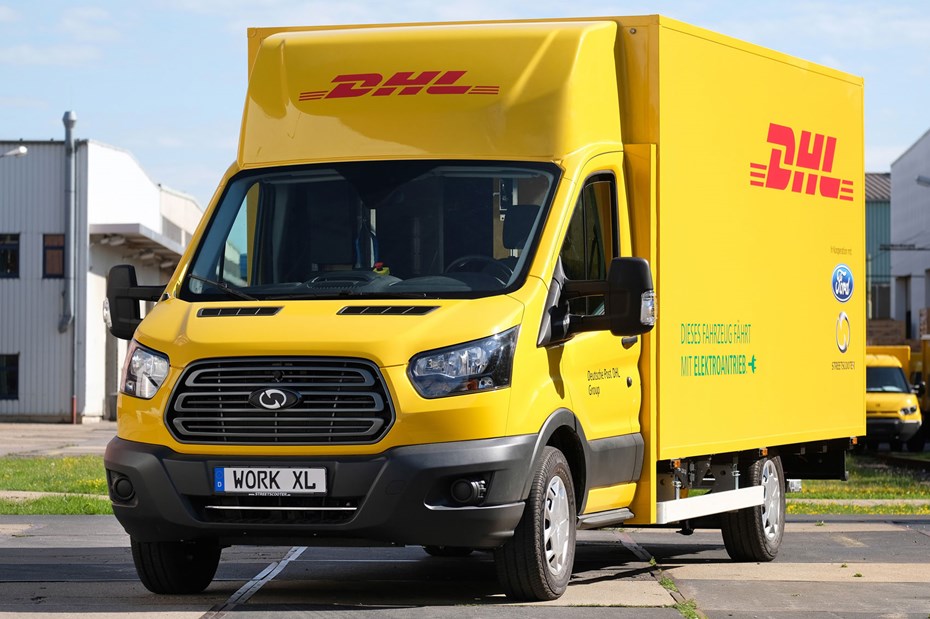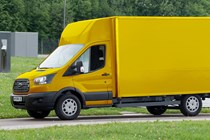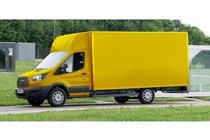Can you imagine Royal Mail joining forces with a van manufacturer to build its own bespoke electric van? Seems unlikely, doesn’t it? But not in Germany, where Deutsche Post DHL and Ford are doing exactly that.
These are the first official pictures of the new Deutsche Post StreetScooter Work XL. It’s based on the Ford Transit chassis, but equipped with a battery-electric drivetrain and a special body built to Deutsche Post’s specifications.
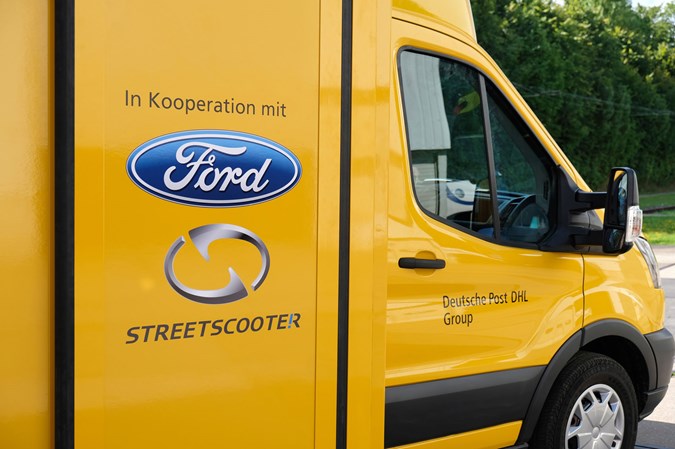
Production was originally scheduled to start in July 2017 – but the firms have rowed-back from that slightly, to say that 150 ‘early build’ examples will be on the road by the end of the year.
However, at least 2,500 StreetScooter Work XL ‘e-vans’ are still expected to be in service by the end of 2018, supporting postal deliveries from the Deutsche Post DHL Group in towns and cities.
For the first time, there is also a suggestion they will be made available for other business to buy as well.
Read the Parkers Vans guide to electric vans
That sounds like a lot of electric vans…
It is.
In fact, according to Ford: ‘With this volume, the joint project will become the largest manufacturer of battery-electric medium-duty delivery vehicles in Europe.’
What on Earth does Deutsche Post know about building electric vans?
More than you might think, actually, as it has a whole subsidiary called StreetScooter that is already doing exactly that.
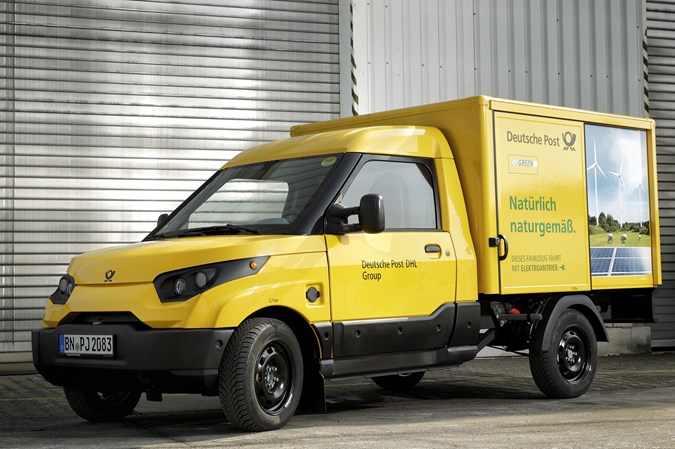
StreetScooter, however, only builds small electric vans (pictured). Hence Deutsche Post turning to Ford for help with building a large vehicle, improving delivery capacity from a single van.
This same logic process will also see Renault, Volkswagen and Mercedes-Benz bring large electric vans to market in the next two years.
That said, existing StreetScooter production is set to be ramped up dramatically, too, with the goal of producing 20,000 a year across two factory sites in Germany.
There are already 2,500 StreetScooters in use by Deutsche Post in Germany, with increasing interest from outside the company.
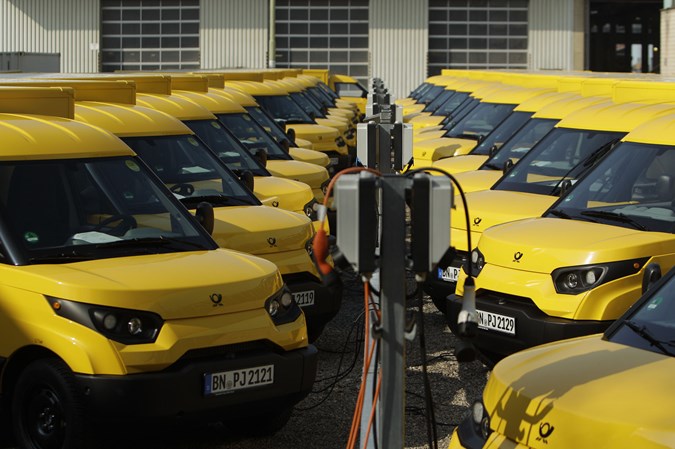
The new large electric van is now confirmed to be called the StreetScooter Work XL.
Isn’t Ford building an electric Transit of its own?
Not quite – but it is a long way down the road towards creating a petrol-electric plug-in hybrid version of the Transit Custom.
You can read all the latest on this Ford Transit Custom PHEV in our separate story by clicking here.
Ford Transit Custom plug-in hybrid electric van – all the latest news
Why are Ford and Deutsche Post building an electric delivery van?
Simply put, they want to reduce emissions – particularly in city centres, where diesel engines are increasingly being targeted as bad news for not just air quality but human health.
Like all electric vans, the new Deustche Post e-van will produce zero emissions in motion. The partnership calculates that each StreetScooter Work XL will save 5.0 tonnes of CO2 and 1,900 litres of diesel every year.
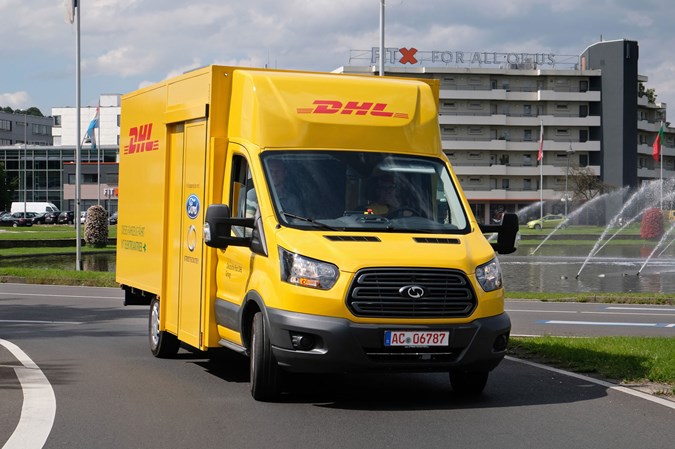
Mutliply that by the planned 2,500 production run, and that’s a total of 12,500 tonnes of CO2 and 4.75 million litres of fuel.
It will also be much quieter than a conventional diesel van, making it better suited for work in unsocial hours – which in turn helps reduce traffic congestion during peak times.
‘I consider this partnership another important boost for electro-mobility in Germany,’ said Deutsche Post executive board member, Jurgen Gerdes.
‘This step emphasises that Deutsche Post is an innovation leader. It will relieve the inner cities and increase the people’s quality of life. We will continue working on completely carbon neutral logistics.’
Ford’s president for Europe, Middle East and Africa, Steve Armstrong added, ‘E-Mobility and innovative traffic solutions are key focuses for us as we transform our business to meet future challenges.
‘As the leader in commercial vehicles in Europe, this partnership plays perfectly to our strengths and in StreetScooters and the Deutsche Post DHL Group we have a partner with enormous competence and a worldwide network.’
What are the load area dimensions and specifications of the StreetScooter Work XL?
While it hasn’t revealed exact dimensions yet, Deutsche Post DHL has confirmed the StreetScooter Work XL will have a 20 cubic metre load volume. That’s enough space for more than 200 parcels apparently.
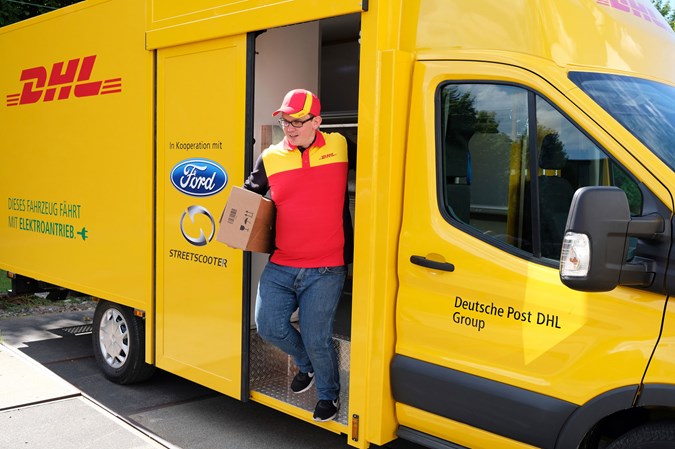
The load area is fitted-out with shelves, and can be accessed from the cab – so the driver doesn’t have to climb up into the back of the vehicle from the outside to retreive packages.
Loading takes places via a kerb-side sliding door or the tailgate.
What’s the range of StreetScooter Work XL?
It will use a modular battery system, rated from 30kWh to 90kWh – from which we can safely reckon a choice of between one and three 30kWh battery packs will be available.
Such modularity is helpful, as it enables operators to balance cost and payload according to demand. The more battery packs you have the further the Work XL will go between charges – but the more it will cost and the heavier it will be.
And as we already know, the more a van weighs, the less it can carry.
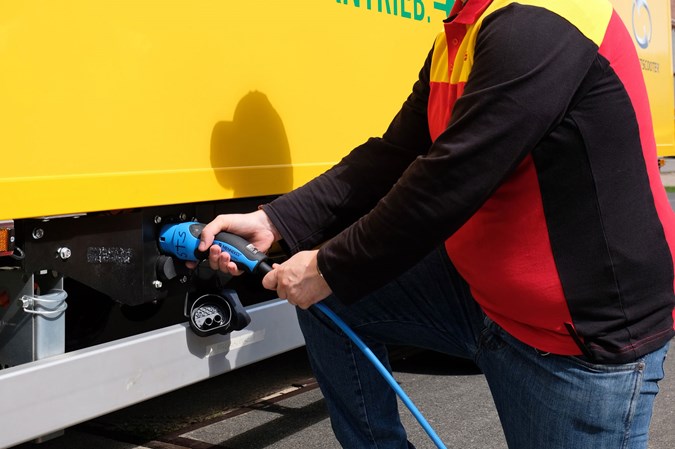
Deutsche Post is claiming a range of between 80 and 200km (that’s roughly 50-124 miles), depending on battery size.
The Work XL uses a 22kW charging system, and can be fully recharged in as little as three hours – that can surely only be with the minimal battery capacity, however.
How much does the StreetScooter Work XL cost and can anyone buy one?
No word on pricing yet, but Deutsche Post DHL has suggested it would be willing to sell the van to third parties if they are interested.
The practical box-van shape could certainly make it a viable alternative to the more conventional large electric vans promised by Renault, Volkswagen and Mercedes-Benz.
Hopefully it will be cheaper than the Iveco Daily Electric, too…
Also read:
Read the Parkers Vans guide to electric vans
Peugeot Partner L2 Electric UK road test review (June 2017)
Nissan e-NV200 UK road test review (May 2017)
Renault Kangoo ZE 33 road test (July 2017)
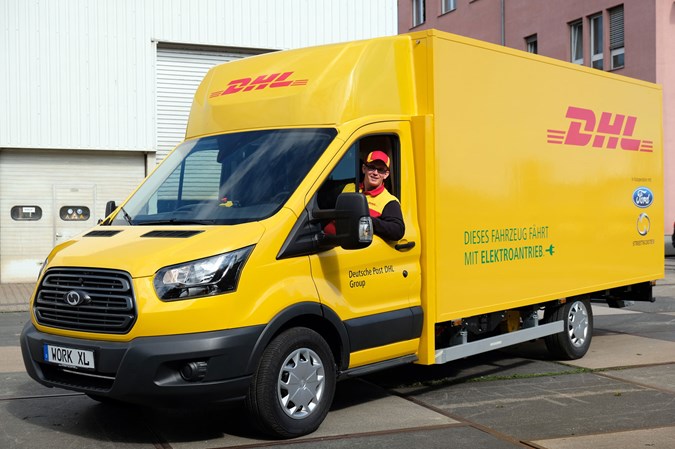
Just so you know, we may receive a commission or other compensation from the links on this website - read why you should trust us.


